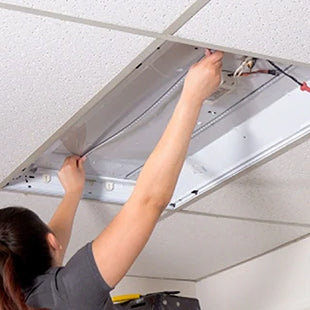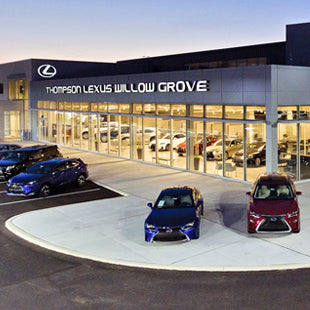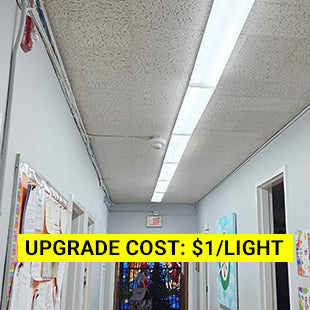Switching from Metal Halide to LED: Benefits, Considerations, and ROI
As businesses and commercial property owners look to reduce energy costs, improve lighting quality, and minimize maintenance, switching from metal halide to LED lighting is an increasingly popular solution. This article answers common questions regarding the benefits, considerations, and return on investment (ROI) when replacing metal halide lights with LED lights.
1. What are the main benefits of replacing metal halide lights with LED lights?
Energy Efficiency: LED lights are significantly more efficient than metal halide lights. This leads to substantial cost savings in electricity bills, especially for outdoor lighting, such as parking lot fixtures, flood lights, and canopy lights. Indoors, high ceiling lighting can be a drain on energy budgets. In applications like these, 200W, 400W, or even 1000W metal halide lamps are common. LED replacements can reduce that wattage—and the associated energy costs—by 60 to 80%.
Performance: Metal halide lamps can take up to 15 minutes to reach 90% of their full light output when first turned on. In addition to this warm-up time, metal halide lamps have a restrike time: If they are turned off (or if the power cuts off) after the lamp has been on for a period of time, it cannot be restarted until its arc tube has had a chance to cool down. This can be another 5 to 15 minutes.
LED lights, on the other hand, offer instant-on performance. They also maintain a more consistent light output over their lifespan.
Cost Savings: Due to their energy efficiency and longer lifespan, LED lights require fewer replacements and less maintenance, resulting in lower overall costs.
Safety: Metal halide lamps emit a lot of heat, which can lead to accidents if operated near combustible materials. Metal halide ballast failures can cause the lamp to explode. Metal halide lamps can also explode in their fixtures as they reach end of life.
LED lamps run cooler, have no ballast, and are not prone to exploding.
2. How does the lumen output and brightness of LED lights compare to metal halide lights, and what factors should be considered when selecting the right LED replacement?
LED lights typically have higher lumen output per watt than metal halide lights, meaning they can provide the same brightness with less energy consumption.
When selecting the right LED replacement, consider factors such as:
- Lumen output to match the brightness of your metal halide lamps
- Luminous efficacy (lumens/Watt) to compare the efficiency of your LED options (higher number = more efficient)
- Beam angle to match the light distribution of your metal halide lamps
- Fixture compatibility if you are retrofitting, rather than replacing, your existing fixtures
3. What is the difference in lifespan between metal halide and LED lights, and how does this impact maintenance and replacement costs?
LED lights have a significantly longer lifespan than metal halide lights, often lasting 50,000 hours or more compared to 12,000-20,000 hours for metal halide. This longer lifespan results in less frequent replacements and lower maintenance costs. This can be significant savings particularly for lights that are hard to reach, such as stadium lights, parking lot and street lights, and high bay lighting.
4. Are there any compatibility issues or challenges when retrofitting existing metal halide fixtures with LED lights?
In most cases, LED lights can be retrofitted into existing metal halide fixtures, but there may be some compatibility issues to consider, such as:
- Ballast compatibility
- Voltage requirements
- Fixture modifications
Consult with a lighting professional to determine the best solution for your specific situation.
5. How do LED lights handle heat dissipation compared to metal halide lights, and what impact does this have on performance and longevity?
LED lights are better at dissipating heat than metal halide lights, which contributes to their longer lifespan and more consistent performance. Adequate heat dissipation is essential to maintain optimal lighting performance and longevity.
6. Can LED lights match the color rendering capabilities of metal halide lights, and how does this affect the overall lighting quality?
LED lights can match or even surpass the color rendering capabilities of metal halide lights, resulting in improved lighting quality. Color rendering index (CRI) values for LED lights typically range from 70-90, while metal halide lights range from 65-85.
7. How does the initial investment for LED lights compare to the ongoing costs of metal halide lights, and what is the typical payback period for switching to LED lighting?
While the initial investment for LED lights may be higher than for metal halide lights, the ongoing costs (energy and maintenance) are significantly lower. The payback period for switching to LED lighting typically ranges from 2-5 years, depending on factors like usage patterns and electricity rates.
However, that period can be substantially shortened if your utility company offers financial incentives for upgrading to more energy-efficient lighting.
8. What incentives, rebates, or tax credits may be available to businesses or commercial property owners for upgrading from metal halide to LED lighting?
Many utility companies, local governments, and federal programs offer incentives, rebates, or tax credits to businesses and commercial property owners who upgrade to energy-efficient LED lighting.
For instance, with PECO Ways to Save from PECO Energy Company, a utility company serving Southeastern Pennsylvania, a business can get a rebate of up to $165 per upgraded parking lot or floodlight fixture, and up to $220 per high bay fixture. This has reduced the cost per fixture for many of our customers in the PECO area to as little as $1/light plus sales tax. And PECO isn't the only utility company offering financial incentives to lighten the energy load commercial customers have on the power grid.
Shop for rebates & incentives available to your business using ELEDLights' easy rebate finder. Simply find a rebate-eligible light from our Rebate Eligible LED Lighting online catalog, then click the Find Instant Rebates link and enter your property's zip code.
Making the Switch
Upgrading from metal halide to LED lighting offers numerous benefits, including energy efficiency, improved performance, cost savings, and better lighting quality. It can be a big project, depending on the size and needs of your business, but it's a project that pays for itself in a short period of time—and it continues paying off, year after year. Overall, investing in LED lighting today is a smart choice for a sustainable future for your business.
Thinking of retrofitting your existing metal halide fixtures? Shop for outdoor LED metal halide retrofits and indoor LED metal halide retrofits.
Looking to replace your fixtures with LED lighting? We offer affordable, reliable, high-quality LED high bay lights, LED flood lights, canopy light fixtures, wall pack lights, and parking lot lights that are excellent alternatives to metal halide.
Whatever you choose, ELEDLights offers risk-free returns, free lighting services, and responsive customer support to all our customers. Make us your new lighting partner today.





